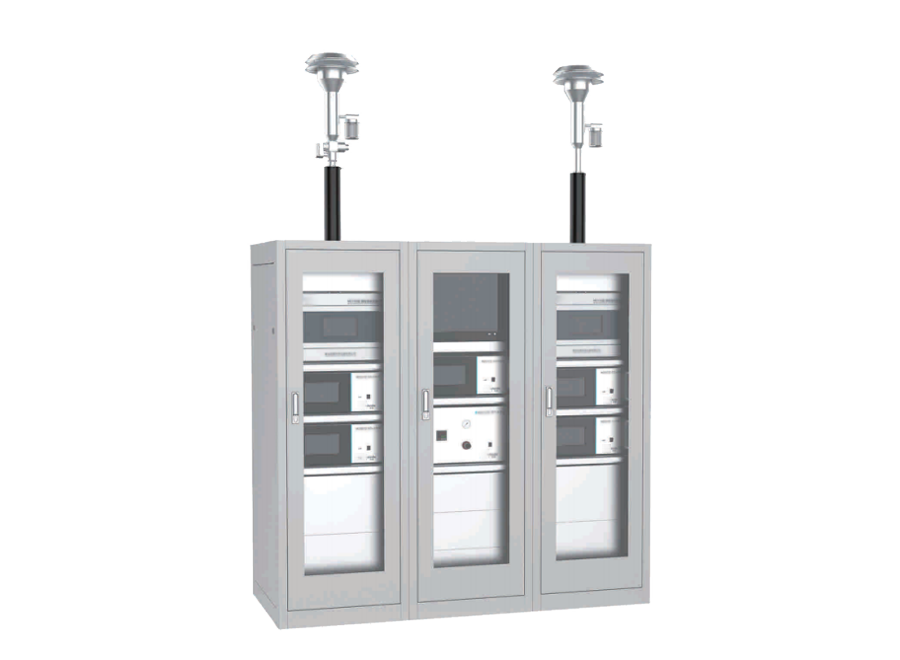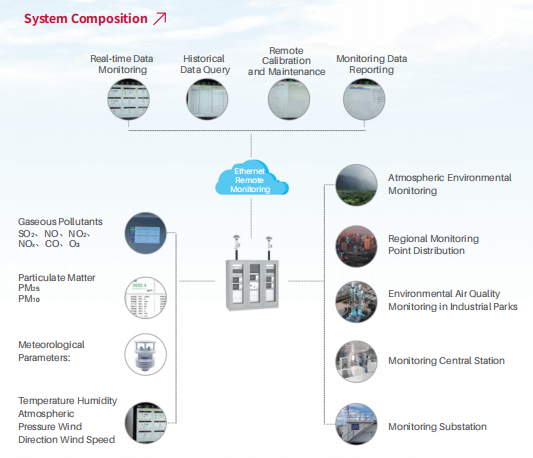
Product Introduction
The continuous ambient air quality monitoring system includes analyzer, NOx analyzer, CO analyzer, O3 analyzer, dynamic calibration instrument, zero air generator, and particulate concentration monitor (PM2.5, PM10). It can also be configured with meteorological parameters such as wind speed, wind direction, ambient temperature, ambient humidity, and atmospheric pressure. This system can continuously monitor changes in the concentrations of conventional pollutants in ambient air, including SO2, NO, NO2, NOx, CO, O3, and particulate matter (PM2.5, PM10). The monitoring methods strictly comply with relevant standards and meet EPA requirements. SO2 detection employs ultraviolet fluorescence methods, NO detection uses chemiluminescence methods, CO detection uses gas filter correlation infrared absorption methods, O3 detection uses ultraviolet absorption, and particulate matter detection employs β-ray methods. This product features high measurement accuracy, good reliability, fast response times, user-friendly operation, and a wide application range. The ZHK6110 continuous ambient air quality monitoring system provides real-time measurement data, instrument status feedback, alarm information alerts, and automatic transmission and query functions, enabling relevant departments to accurately and timely grasp the air quality status.
Get a quote
Target Customers
The system is suitable for environmental monitoring agencies at all levels, research institutions in colleges and universities, hospitals, disease control departments, construction engineering units, chemical parks, public facilities such as parks, and industrial production enterprises including chemical plants, biopharmaceutical factories, wastewater treatment plants, power plants, painting factories, lumber mills, cement plants, lime factories, printing plants, smelting plants, textile factories, and waste landfill incineration plants.
Application
This system is applicable for routine monitoring of ambient air quality, detection and assessment of toxic and harmful gases in industrial parks and occupational health sites, environmental evaluations, as well as research and teaching relevant to educational and scientific departments.
